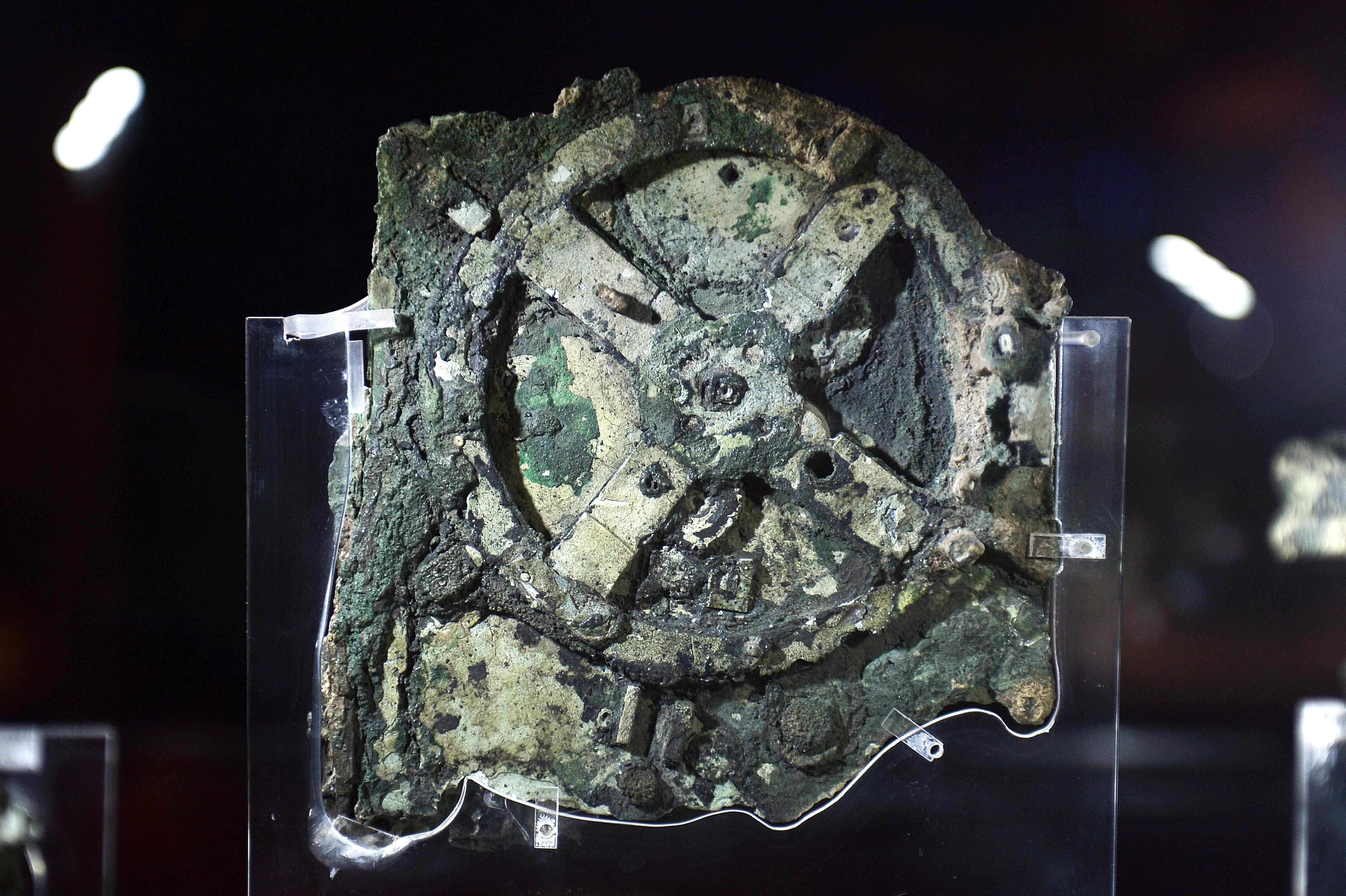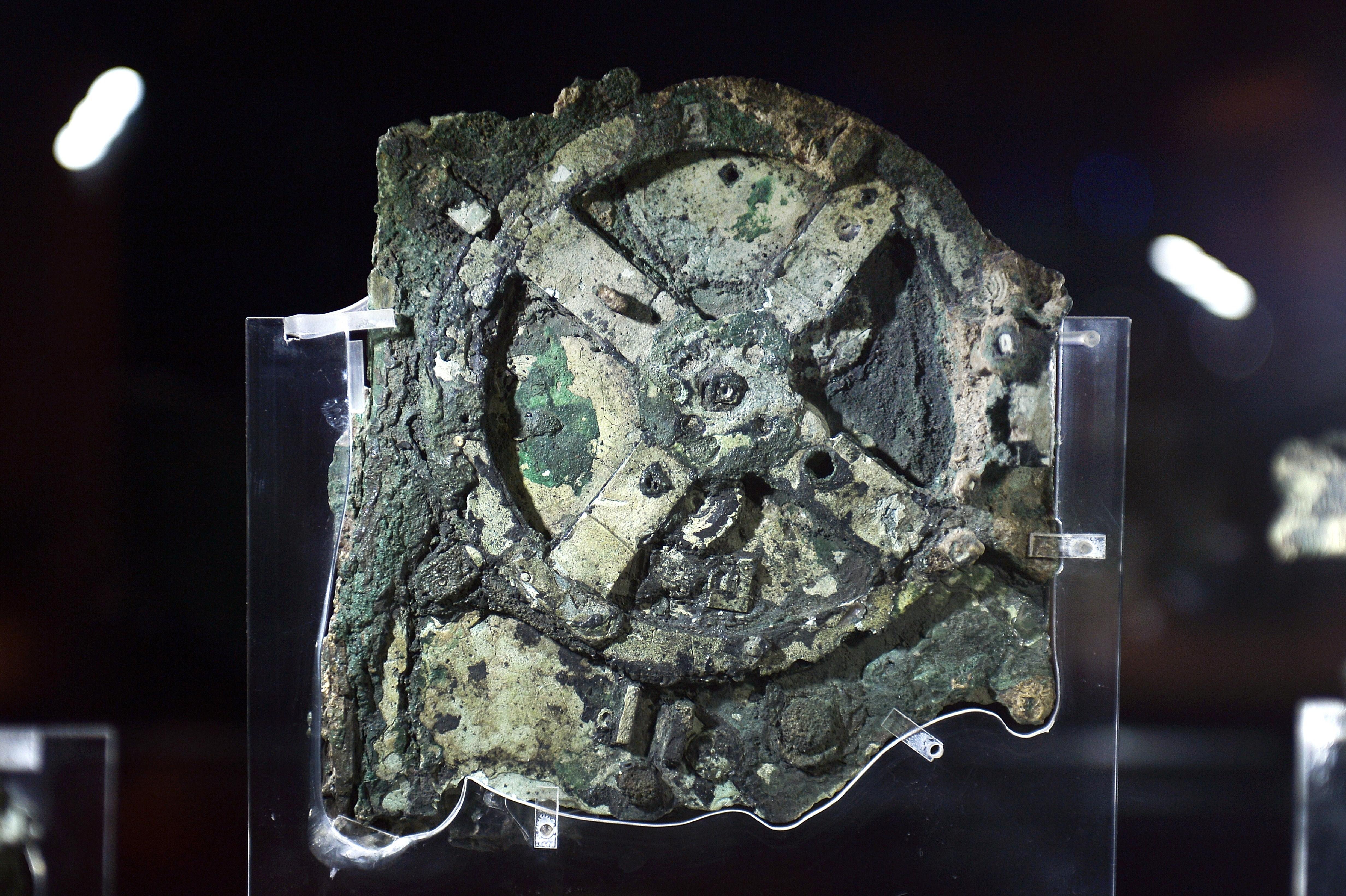
It took researchers decades to figure out this ancient device 'too advanced to be real'
By Mark PygasNov. 20 2024, Updated 1:37 p.m. ET
When the likes of Ancient Rome and Greece collapsed, it set humanity back hundreds of years. The Dark Ages marked hundreds of years of decline in Europe, which wouldn't be stopped until the Renaissance in the 15th and 16th centuries.
It can often be strange to think about the scientific marvels that were around thousands of years ago, and which wouldn't be replicated until relatively recently in human history. One such treasure of the ancient age was a collection of corroded lumps of copper that were found in a shipwreck off the coast of Antikythera, Greece, in 1900. The device is now known as the Antikythera mechanism.

As early as 1902, archaeologist Valerios Stais discovered that a piece of the corroded device had a gear wheel embedded in it. Stais suggested that the device could have been an astronomical clock, but most scholars dismissed this, believing that such a device would have been far too advanced for the 2,000-year-old shipwreck it was found on. At the time, such a device was not believed to have existed until 1,500 years later.
Researchers stopped investigating the item until 1952 when British science historian and Yale University professor Derek J. de Solla Price became interested in the item. It wasn't until 1971 that Price and Greek nuclear physicist Charalampos Karakalos were able to make x-ray and gamma-ray images of the relic's 82 fragments.
In 1974, Derek de Solla Price concluded that the device was indeed an astronomical clock, and the device is now often referred to as the first known analogue computer. The historian concluded that the device was made in about 87 BC and lost only a few years later. However, the clock's construction relied on astronomy and mathematics developed by the Greeks in the second century BC, suggesting that it had undiscovered predecessors.
These findings confirmed that the Antikythera mechanism could predict the positions of the planets that the Greeks knew about—Mercury, Venus, Mars, Jupiter, and Saturn—as well as the sun and moon. The device was also used to predict eclipses.
A black and white stone on the device also turned to show the phases of the moon.
In 2008, continued research suggested that the device originated in the colonies of Corinth, where the calendar that the device used originated. Syracuse was a colony of Corinth and the home of Archimedes, which may mean that the device originated in the scientist's renowned school.
Others have suggested that the device could have originated in the ancient Greek city of Pergamon, home of the Library of Pergamum, or on the island of Rhodes.
Wherever the device may have originated, it is still incredibly advanced, and would not be replicated for thousands of years. This virtual reconstruction shows exactly how complex the mechanism was.
Virtual Reconstruction of the Antikythera Mechanism (by M. Wright & M. Vicentini)
But researchers weren't done understanding the device just yet.
In 2006, Mike Edmunds of Cardiff University in Wales revealed that the device had hidden inscriptions—some with characters that were just 1/20th of an inch wide—which revealed even more about the device.
"Much of our current knowledge about the Antikythera Mechanism has come from these inscriptions," Nature explains.
This 2007 recreation of the device, made with clear plastic rather than the metal that the Greeks would have used, shows exactly how advanced the device was.

Yes, a computer existed thousands of years ago.
This article was originally published on July 27, 2020. It has since been updated.
